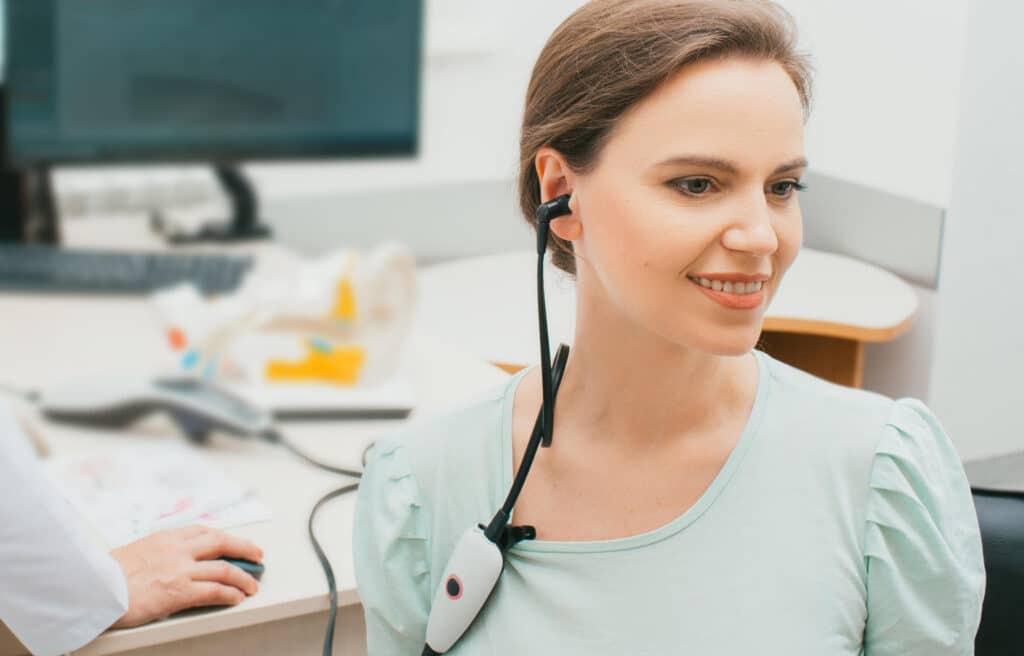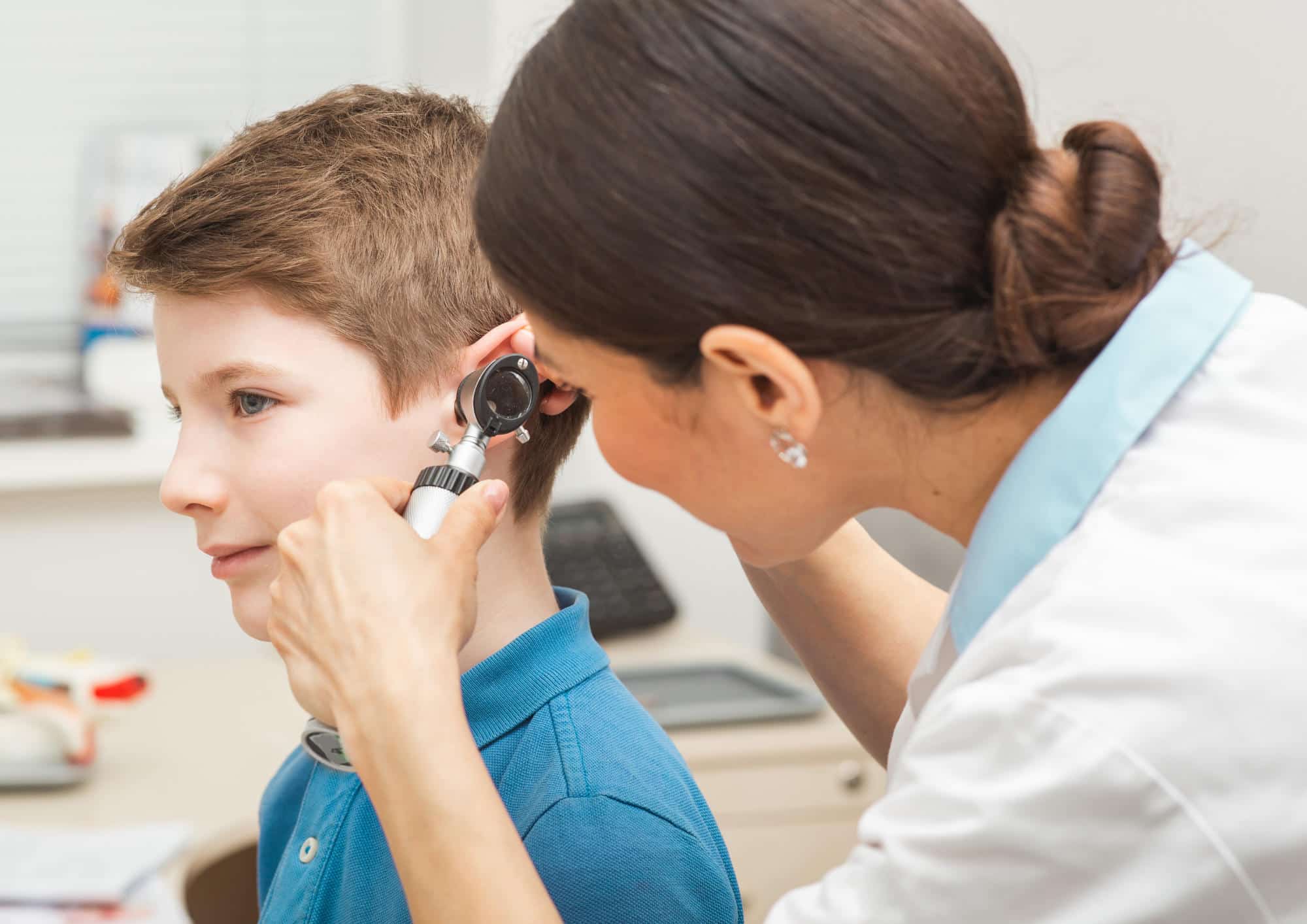What is Involved in a Hearing Test

An Audiometry test is facilitated to evaluate the sensitivity of a patient’s hearing. Should the patient have a hearing loss, the audiometry test will determine the severity and type of loss that exists. The audiometry test assesses the function of the three parts of the ear: the outer, middle ear inner ear. The process is painless, non-invasive and is assessed by a qualified audiologist.
The audiometry test begins with a visual inspection of the ear canal and ear drum using a special ear light called an otoscope. This is done prior to testing, to ensure there are no foreign bodies and/or wax obstructing the hearing pathways. If obstruction is noted, this will need to be safely removed prior to testing to ensure accurate results are obtained.
A middle ear pressure test, called tympanometry, is then performed to make sure there is no middle ear congestion or blockages.
The audiometry test is then conducted in a sound treated room or special booth to ensure no noise or external interference affect the accuracy of the results. The patient is fitted with headphones and asked to push a buzzer when they hear a sound. Different pitches of sound are tested in each ear separately. The results are then plotted on a special graph called an audiogram.
The final test is a speech discrimination task is also done, to assess the clarity of the hearing. When assessing a patient’s communication ability, both the hearing and speech clarity results, patient age and cognitive abilities are taken into consideration.
The audiometry test begins with a visual inspection of the ear canal and ear drum using a special ear light called an otoscope. This is done prior to testing, to ensure there are no foreign bodies and/or wax obstructing the hearing pathways. If obstruction is noted, this will need to be safely removed prior to testing to ensure accurate results are obtained.
A middle ear pressure test, called tympanometry, is then performed to make sure there is no middle ear congestion or blockages.
The audiometry test is then conducted in a sound treated room or special booth to ensure no noise or external interference affect the accuracy of the results. The patient is fitted with headphones and asked to push a buzzer when they hear a sound. Different pitches of sound are tested in each ear separately. The results are then plotted on a special graph called an audiogram.
The final test is a speech discrimination task is also done, to assess the clarity of the hearing. When assessing a patient’s communication ability, both the hearing and speech clarity results, patient age and cognitive abilities are taken into consideration.
Patient’s who may need an audiometry test include:
- Those who have noticed a change in their hearing acuity
- People who notice ringing in their head, known as tinnitus
- Children who have poor speech and language development
- Those who require hearing as a pre-employment medical requirement, i.e., pilots, police officers, tradesmen using heavy machinery
- Pre- Ear Nose or Throat (ENT) surgery to establish baseline results
to evaluate the need for hearing devices - People experiencing dizziness, imbalance, or vertigo
- Those with a family history/hereditary predisposition to hearing loss
- People who take medication that could damage/change their hearing i.e., cancer treatment chemotherapy, cisplatin drugs etc.

At the completion of the audiometry tests, the patient’s Victorian Hearing audiologist will collect the results and generate a report for the patient and the referring specialist (i.e., their GP, or ENT).
In this report the degree of hearing will be noted, prevention tactics will be discussed to preserve good hearing and medical intervention for the treatment of any hearing loss will be discussed.
In this report the degree of hearing will be noted, prevention tactics will be discussed to preserve good hearing and medical intervention for the treatment of any hearing loss will be discussed.
If a patient requires a hearing test, Victorian Hearing recommend a comprehensive hearing assessment with one of our dedicated, trusted, and caring audiologists across Melbourne in 10 locations.
